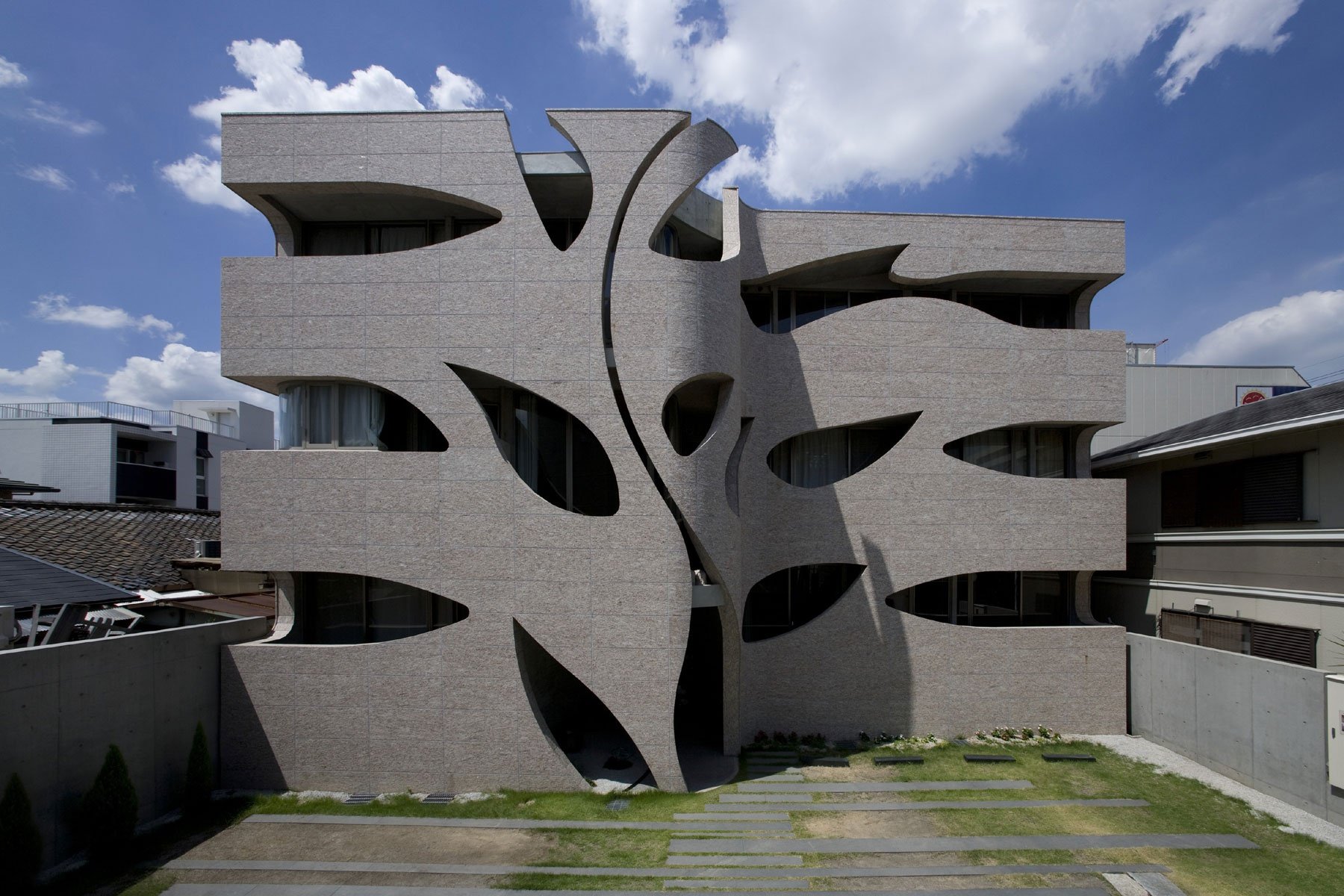#12378. Biomorphic Facade: Organic Perforation in Contemporary Architecture
This building represents an outstanding example of contemporary architecture with a biomorphic facade. The gray granite cladding contrasts with organic, sculptural cutouts that penetrate the monolithic volume of the structure. These curvilinear openings resemble the structure of a leaf or a cell under a microscope, creating the impression that the building "breathes."
The facade is distinguished by bold plasticity of forms — instead of traditional rectangular windows, the architect used smooth, streamlined openings of various sizes. These apertures serve not only as a decorative element but also fulfill a functional purpose — they form natural lighting and ventilation for interior spaces, providing a unique light perception experience for the building's inhabitants.
In this project, we see the overcoming of traditional geometric rigidity in favor of a biomimetic approach, where architecture imitates natural forms. The massiveness of the stone facade is softened by these organic cutouts, creating an interplay of light and shadow on the building's surface throughout the day.
In private construction, such an approach can be adapted through the use of non-linear forms in window openings, perforation of facade elements, or creation of sculptural projections. Even if full reproduction of such a facade is impractical for a private home, individual elements — asymmetrical windows, perforated screens, or organic geometry — can be incorporated into a more traditional design, creating a unique architectural language.
